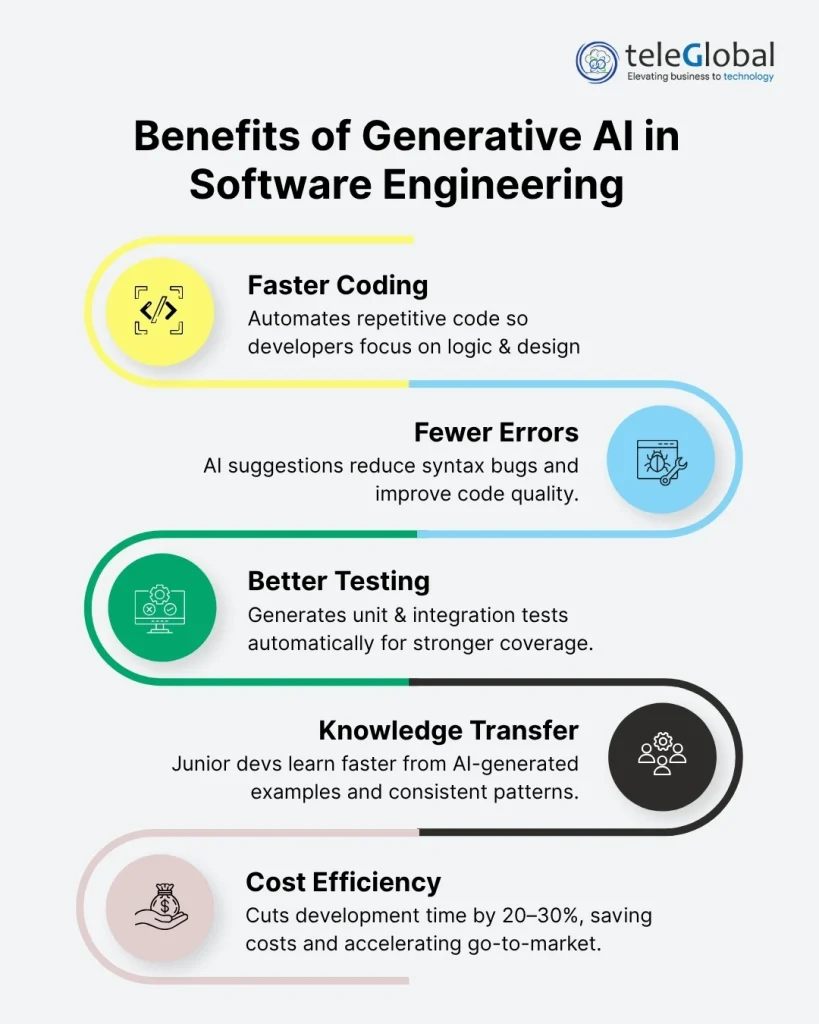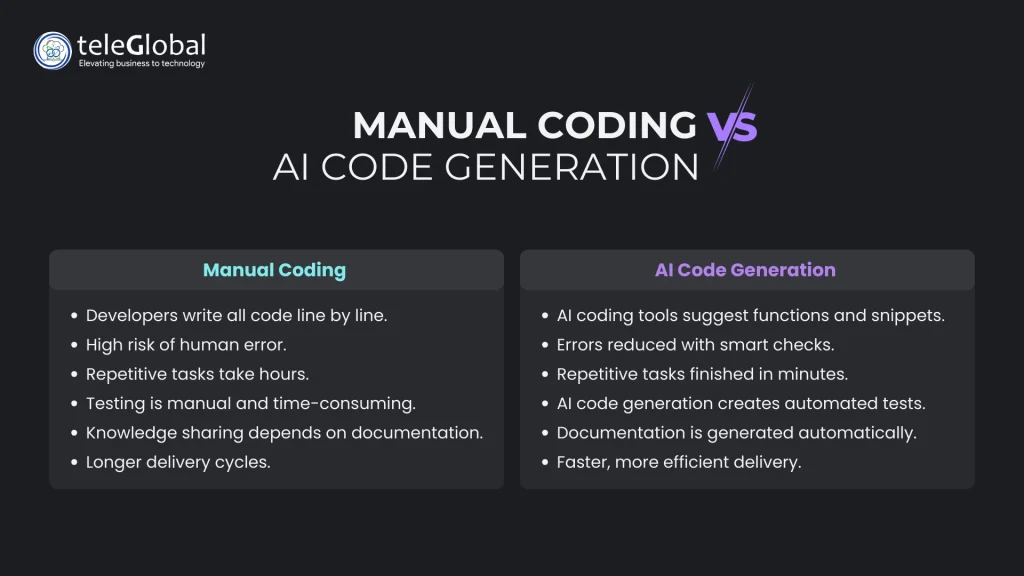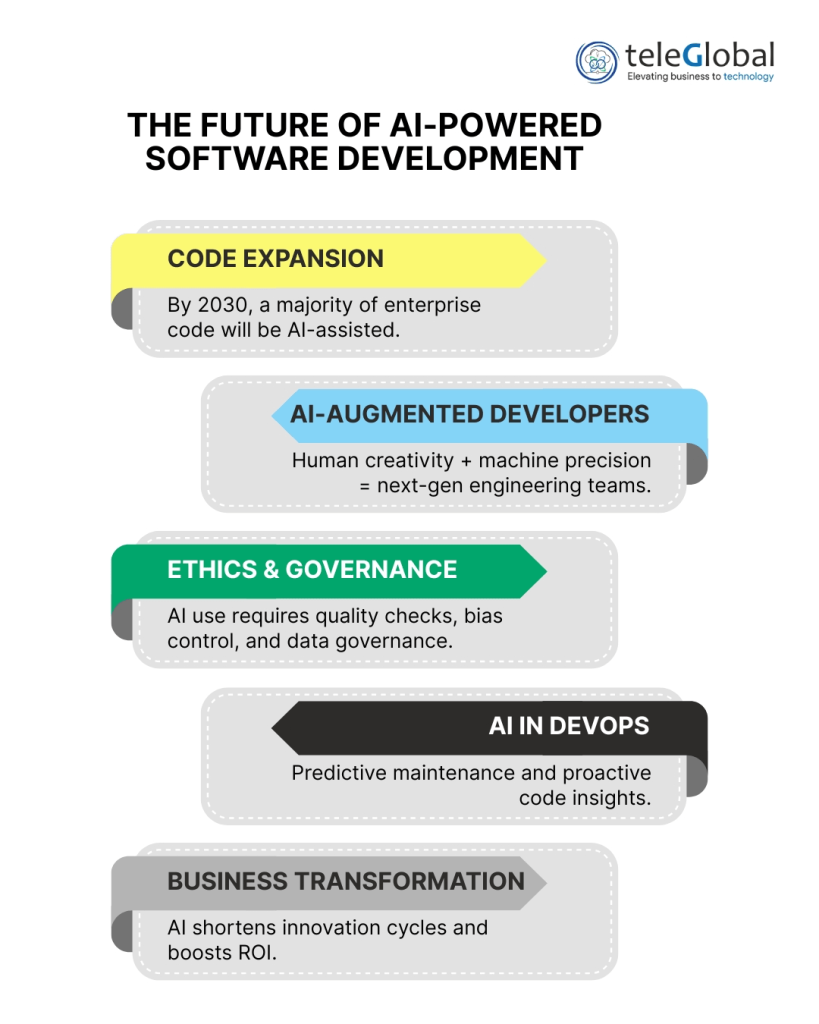
| Author: Kamlesh Kumar | Published: 12-Sept-2025 |
Software development always balances speed and quality. Teams face rising complexity, fewer staff, and tight budgets. A single bug in production can cost more than $10,000. Missed deadlines drain money and weaken trust. Developers burn out from pressure.
Generative AI for software development helps fix this. These tools act like digital assistants. They write code, create tests, and refine documentation. They do not replace developers. They cut errors and speed up tasks.
For businesses, this means quicker delivery, stronger products, and lower stress.
By 2024, GitHub found that half of its code had AI help. In 2025, use has grown even faster. More firms adopt AI-powered software development to save time and cost.
This blog explains the benefits of generative AI in software engineering, common use cases, real examples of generative AI in coding, and the future of AI in software development.
At its core, generative AI for software development uses trained models to create code, tests, and documentation.
These tools learn from millions of examples. They suggest fixes or code when developers type.
It goes beyond autocomplete. It can:
Unlike static automation, these tools adapt to context.
For example, an AI coding tool suggests React components for front-end work. It may also improve SQL queries in a database project.
The benefits of generative AI in software engineering are already clear for developers and businesses.

The most powerful part of this movement is its wide reach. Here are the top generative AI use cases in software development:
AI coding tools suggest code snippets, functions, and libraries while you type. This speeds up work and lowers context switching.
AI code generation produces test cases that match project logic. This helps teams find bugs earlier.
Clear docs matter. Generative tools convert code into human-readable explanations, saving hours of manual writing.
Cloud teams use AI-powered software development to generate Terraform or Kubernetes scripts. That means faster setup and safer deployments.
Tools scan code for vulnerabilities and suggest fixes. This lowers risk for enterprises with strict compliance needs.
One of the toughest tasks in IT is modernizing old systems. Generative tools suggest modern frameworks and rewrite code more efficiently.

Several tools are already shaping how developers work. Here are some well-known examples of generative AI in coding:
These tools are not experiments. They are part of daily workflows in 2025.
Software development automation is not new. Teams already use CI/CD pipelines, testing frameworks, and monitoring. The shift now is adding AI-powered software development at every stage.
This end-to-end workflow changes how teams work. Instead of spending hours fixing manual errors, they focus on features that improve business value.
The future of AI in software development is already being written. Here are trends shaping the next decade:

Tools will learn your coding style and adapt to your projects.
One assistant will manage Java, Python, JavaScript, and SQL in a single project.
Developers will describe features in plain language, and systems will generate code.
AI coding tools will integrate deeper security checks to reduce data leaks and breaches.
Generative development will connect code with business goals, ensuring software delivers measurable outcomes.
According to Gartner, by 2030 over 80% of enterprise code may be generated with AI support.
The move toward AI-powered software development is not just hype. It is solving real problems: slow delivery, high bug rates, and rising costs. Teams adopting generative AI for developers see faster delivery and higher quality.
At TeleGlobal International, we help businesses adopt these tools in a safe and effective way. From strategy to tool selection, training, and integration, we ensure your investment delivers long-term results.
It is software that produces code, tests, or documentation to help developers.
Faster coding, fewer errors, stronger tests, lower costs, and easier onboarding.
Code writing, testing, documentation, infrastructure, security, and refactoring.
It is the automatic creation of code using smart tools.
They speed work, reduce mistakes, and ensure consistency.
It uses smart systems to automate coding, testing, deployment, and monitoring.
Tools will be more personal, secure, and business-driven.
 close
close

Hi there! At TeleGlobal, we turn your cloud vision into AI-accelerated reality. What challenge can we help you solve?
Powered by ![]() teleBot
teleBot